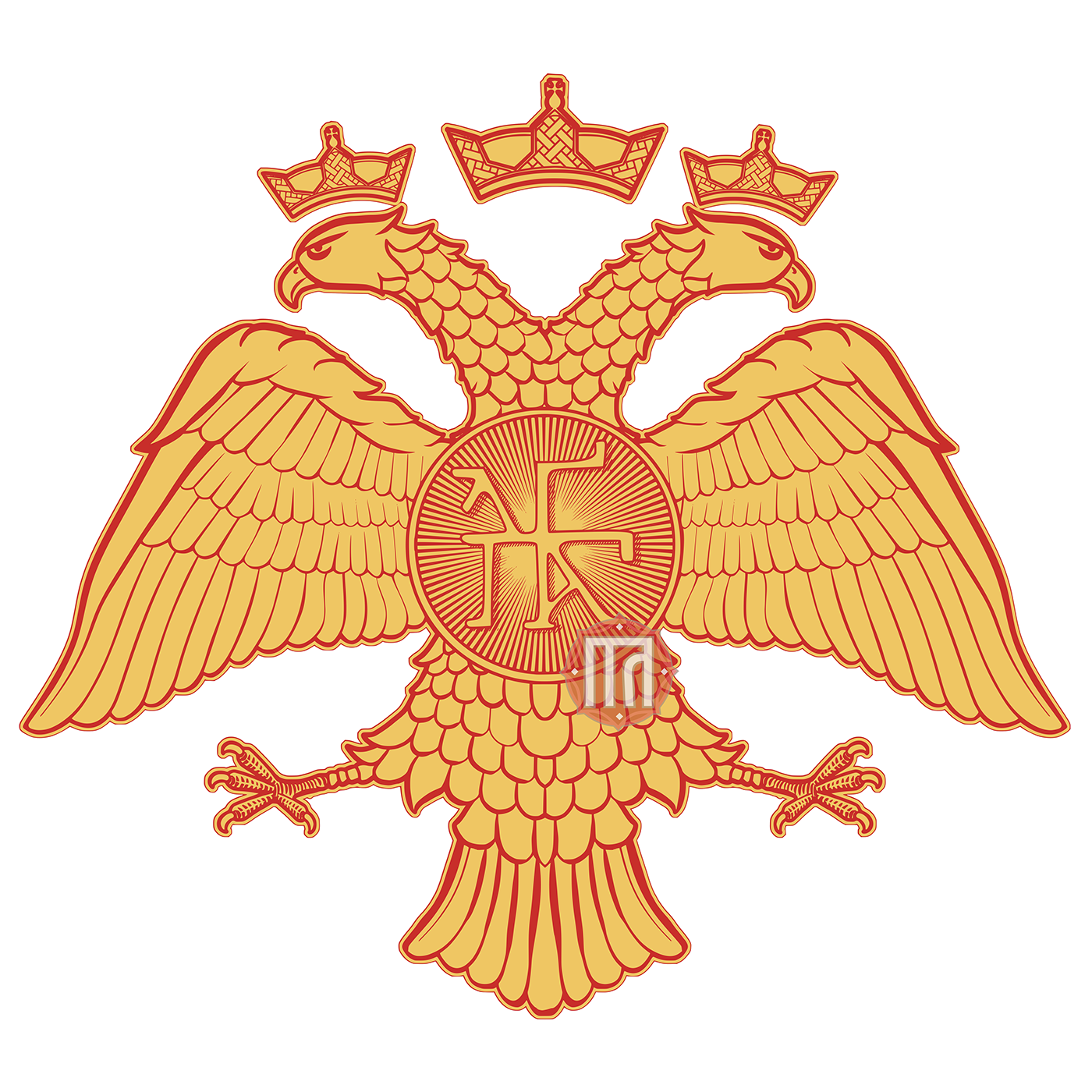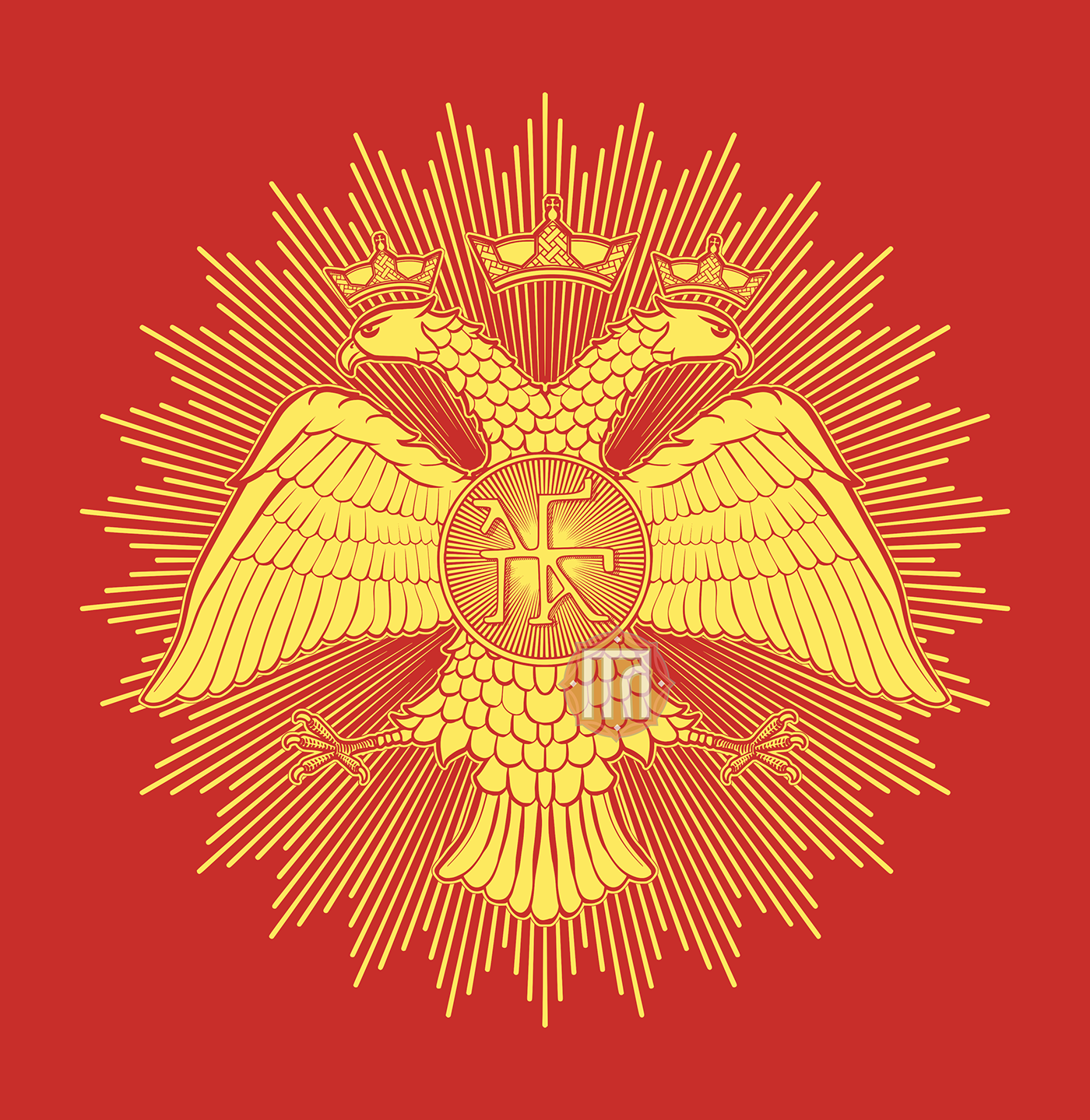BYZANTINE DOUBLE-HEADED EAGLE

vector work. Krita+Inkscape
In heraldry and vexillology, the double-headed eagle is a charge associated with the concept of Empire. Most modern uses of the symbol are directly or indirectly associated with its use by the Roman/Byzantine Empire, whose use of it represented the Empire's dominion over the Near East and the West. The symbol is much older, and its original meaning is debated among scholars. The eagle has long been a symbol of power and dominion.
Used during the late Byzantine Empire as a dynastic emblem of the Palaiologoi, it was adopted during the late Medieval to Early Modern period in the Holy Roman Empire on one hand, and in Orthodox principalities Serbia and Russia on the other, representing an augmentation of the (single-headed) eagle or Aquila associated with the Roman Empire.

The early Byzantine Empire continued to use the (single-headed) imperial eagle motif. The double-headed eagle appears only in the medieval period, by about the 10th century in Byzantine art, but as an imperial emblem only much later, during the final century of the Palaiologos dynasty. In Western European sources, it appears as a Byzantine state emblem since at least the 15th century.
A modern theory, forwarded by Zapheiriou (1947), connected the introduction of the motif to Emperor Isaac I Komnenos (1057–1059), whose family originated in Paphlagonia. Zapheiriou supposed that the Hittite motif of the double-headed bird, associated with the Paphlagonian city of Gangra (where it was known as Haga, Χάγκα) might have been brought to Byzantium by the Komnenoi.

The double-headed eagle device used by JOHN VIII PALAIOLOGOS (r. 1425–1448)
Eagle in Russian Style




THANK YOU !!!

